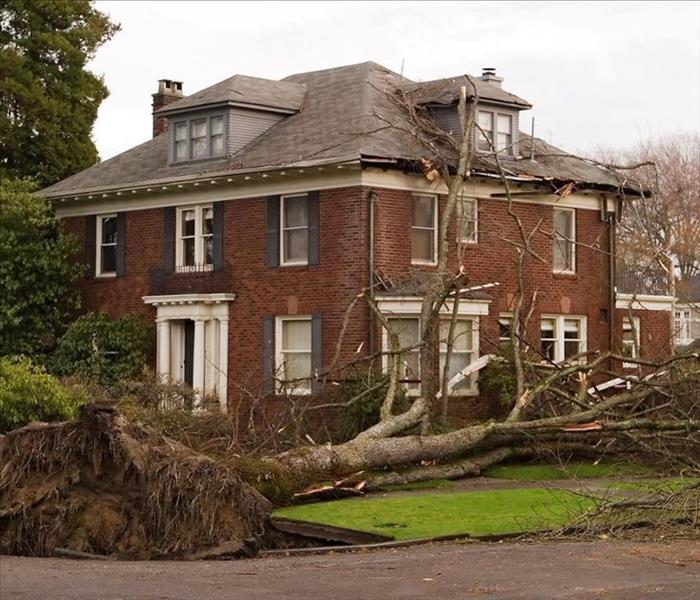Storm Damage and Your Home’s Structure
11/18/2019 (Permalink)
 SERVPRO of Marlton/Morningside responds immediately to any storm emergency. We repair your home to its pre-disaster condition.
SERVPRO of Marlton/Morningside responds immediately to any storm emergency. We repair your home to its pre-disaster condition.
Ways a Storm May Damage Your Home's Structural Integrity
One of the reasons why prompt storm damage remediation is so critical is because a storm may damage your home in ways that aren't always obvious. A professional can help you identify and solve any storm damage to the structural portions and other inner workings of your home.
Discover some of the ways a storm could damage your home's structural integrity.
Roof Damage
Your roof can have obvious structural damage if a tree falls on it. However, that's not the only way that a storm could damage the structure of your roof. For example, large tree branches that fall on the roof can also cause damage even though they don't cause an evident cave-in.
Another way a storm can structurally damage your roof is by overloading it with weight. Too much snow can have this effect, especially if it's very wet snow or accompanied by ice.
Foundation Damage
One type of storm damage that can affect your foundation is flooding. Another is erosion. Localized flooding can increase the pressure of water against your foundation wall, which could result in cracks, shifting, sinking, and bowed foundation walls.
Erosion can be more insidious. Rivulets of water from the storm can wash away dirt from around your home's foundation. At first, this may not seem like a big deal, but the ground around your foundation is what holds it in place. And erosion can eventually result in similar types of foundation damage as it allows water more access to your home's foundation.
Interior Water Damage
Whether it enters through a broken window or a roof leak or rises up from the ground, water can be one of the biggest forces of storm damage. Although water may not destroy literally everything it touches, it can come close. Water can cause structural failure in commonly used building materials in your walls, ceilings, and floors.
Drywall can soften once it's been soaked in water and will need replacing. Other building materials such as particleboard may swell up and need replacing as well. Water can also cause plywood to delaminate and make other types of wood crack or split.
Floors, sub-floors, structural beams, rafters, and other significant structural components of your home could be susceptible, depending on what they're made of.
Pest Damage
Although storms don't actually create pests, they can send wildlife looking for places to shelter and can sometimes create damage that allows pests into your home. While most pests are just a nuisance (and sometimes a potential health and safety hazard), some can actually affect your home's structure as well.
Termites may be the most significant example of an insect that causes structural damage. Other wood-destroying insects (typically carpenter ants and powder post beetles) can also cause structural damage to wood components of your home. Prompt storm damage repair can reduce the chances of picking up any of these pests due to storm damage.
Mold Damage
Mold can be a byproduct of storm damage. Because the visible growth of mold exists on the surface of a wall, floor, or other object, homeowners may think of mold as more of a staining problem than a structural problem. But mold has deep-reaching roots that can also eat away at the interior of the object it infests.
Mold uses the organic substances in the wall or other structure as food, so a more severe mold growth may mean a faster deterioration of structural stability. Fortunately, this damage doesn't occur quickly. But mold growth does begin quickly; the EPA recommends remediating any moisture problems in under 48 hours to prevent mold.
As you can see, your home's structure is susceptible to many other types of damage than just large falling objects. For more information on storm damage, how you can prevent storm damage, and what to do if you suspect your home has sustained damage from a recent storm, get in touch with SERVPRO of Marlton/Morningside today.





 24/7 Emergency Service
24/7 Emergency Service